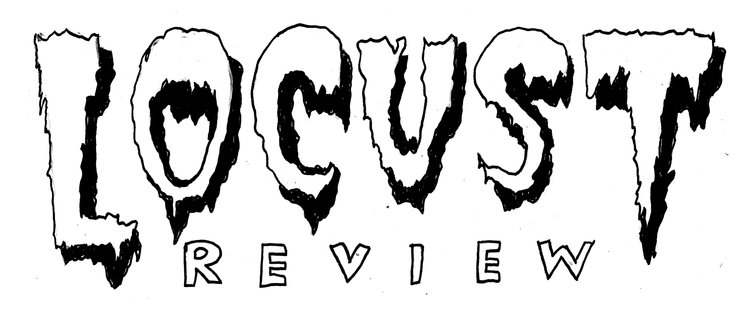Dear Artists, Comrades, Friends, Associates, and Bored Police Spies,
We are pleased to announce the first issue of Locust Review — forthcoming in late October 2019. Locust Review is a socialist journal of the radical weird. Printed four times a year in relatively affordable and anachronistic black and white newsprint, as well as online, we will be offering up art, fiction, poetry, drama, creative non-fiction, and whatever else we think may directly fuel the imagination and hunger for a different future in our drab end times.
Our first issue will feature the absurdly eldritch artworks of Anupam Roy, Adam Turl and Jon Cornell, glitchcraft from the artist Omnia Sol, plus poetry and fiction of cosmic violence by Tish Markley, Alexander Billet and Mike Linaweaver. Each issue of Locust will also include updates from Turl and Markley’s Born Again Labor Museum (BALM) project — an evolving and modular performance and monument to the coming “rebirth or reanimation of all past, present, and future generations of the exploited and oppressed.”
We will also be running an excerpt from labor activist and playwright Thomas McKechnie’s neo-Brechtian play Remembering the Winnipeg General -- performed to acclaim earlier this year. Finally, we are pleased to publish a strange and winding interview with Jon Langford of post-punk/alt-country legends the Mekons, where he ruminates on art, socialism, radical creative praxis, and how to find the bizarre in wide open spaces.
***
Locust Review will be unapologetically socialist and irrealist. We reject the framework of “capitalist realism” that has infected every aspect of our culture, producing cynical aesthetics and narratives, projecting the “morality” of exploitation into daily life as well as forward and backward through time. This “realism,” its constant viral imagery, its “prestige” television shows, its banality, tokenism and zombie formalism, is little more than an apologetics for social terror and the daily traumas inflicted on working and oppressed people.
We propose what we and other radical thinkers have called critical irrealism. Irrealism is a broad tradition encompassing horror, surrealism, fantasy, conceptualism, speculative fiction, situationism and many other “non-realist” styles and movements.
Critical irrealism emphasizes the alterity, the otherworldliness, of these styles to discover a radical truth living in the cracks of late capitalism. The surrealists might have called this the “dream image.” Indian communist artist Anupam Roy (featured in our first issue) calls it “the real image.” Whatever it might be called, we see it as corresponding more closely with how people experience and interact with a world at once hyper-connected and alienated while threatened with really-existing catastrophe.
Socialist Realism, in the contemporary context, tends to assume a non-existent “normal” working-class. The working-class is weird. There is no normal to appeal to. Critical irrealism assumes a working-class that contains within itself varied and queer multitudes. It assumes the gravediggers of capitalism to be a chaotic jumble. And that each individual gravedigger contains within them an entire universe.
***
We invite you to join us in this endeavor. Our Patreon is currently live for subscribers to join and donate, as are our Facebook and Instagram. If you are interested in submitting work, or supporting us in any way, we hope you’ll reach out to us at locust.review@gmail.com.
Above all, we hope that you’ll find some meaning in dissecting the absurdities before us as we explore the gravediggers’ multiverse.
Sincerely,
The Locust Arts + Letters Collective

